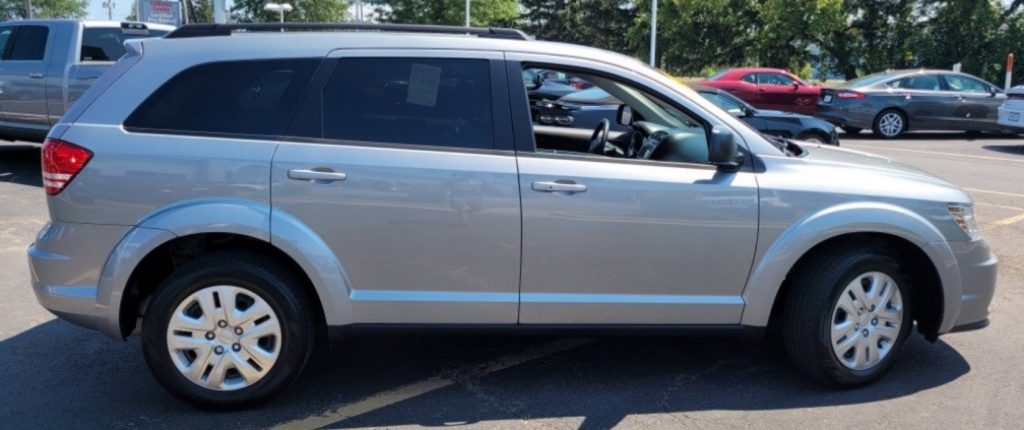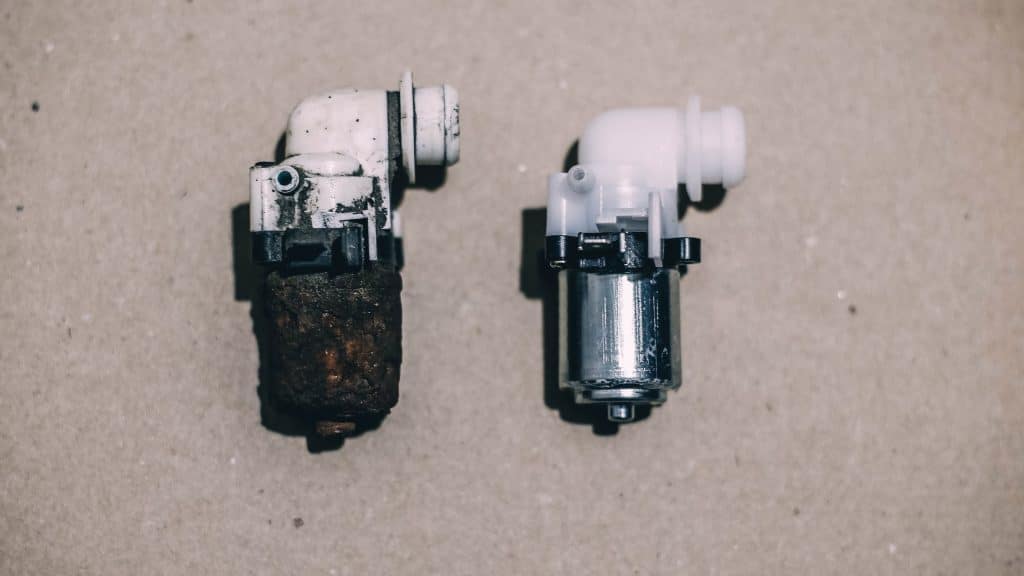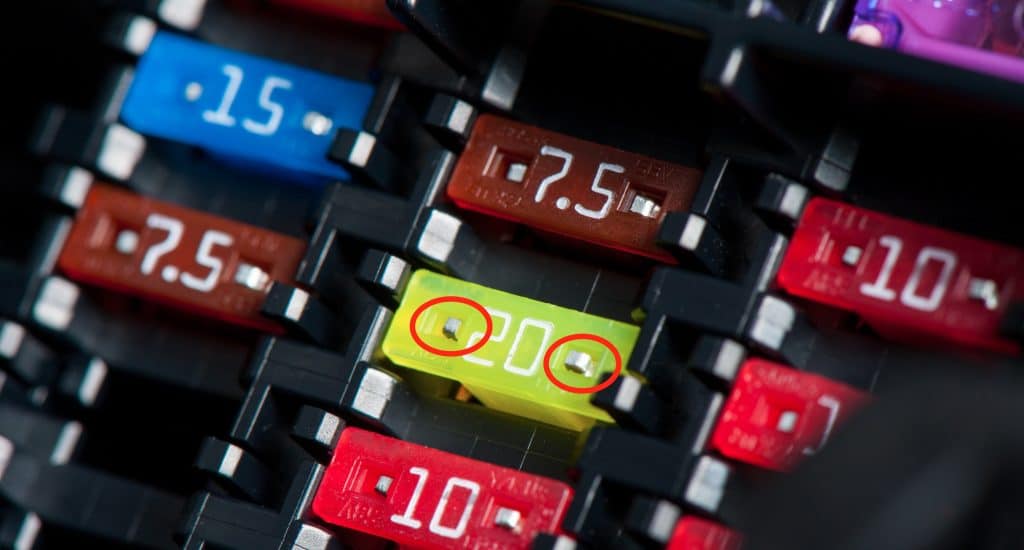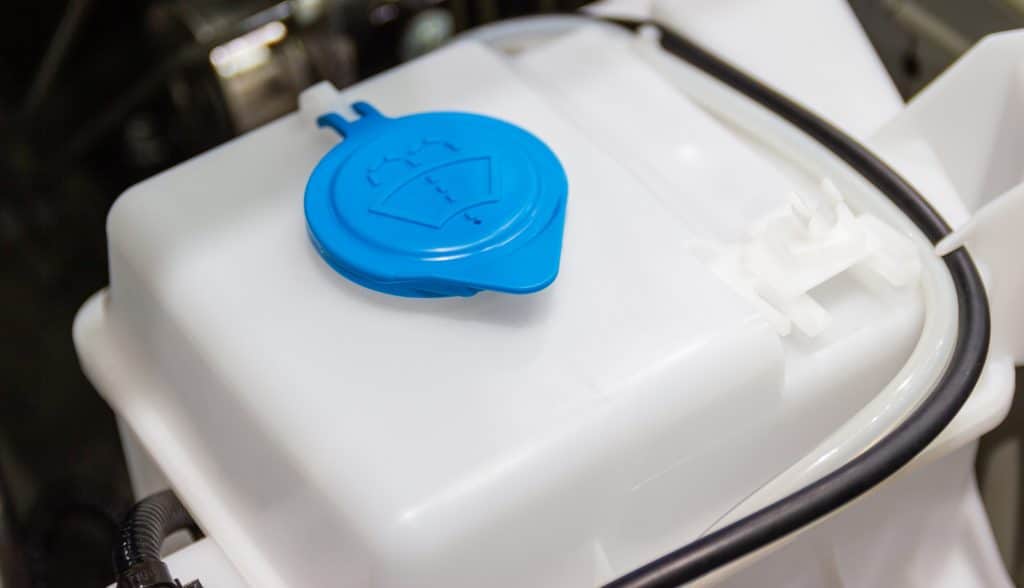
If your Dodge Journey has washer fluid that is not coming out, it is caused by a few common issues. This article aims to give quick practical advice to help you get your wiper/washer pumping fast.
Dodge Journey Washer Pump Not Working Quick Diagnosis Table

| Did You Hear the Washer Motor? | Causes |
|---|---|
| Yes | No Fluid, Clogged Nozzles, Clogged Line, Broken Line, Frozen |
| No | Bad Motor, Blown Fuse, Bad Washer Switch, Wiring Harness Failure |
First: Determine if the Pump is Working

First, check your Journey’s washer fluid reservoir. The number one reason why washer fluid will not come out is no fluid, followed by a failed washer pump. As long as there’s fluid in it, let’s proceed with identifying why your vehicle’s washer pump isn’t functioning.
The first thing you need to do to fix the problem is to listen to your Journey’s washer pump motor.
Here’s how to tell if it has failed.
- Turn the ignition to run, but don’t start your Journey.
- Next, hit the windshield washer button.
- If you hear the motor buzzing or whining, you’ll need to determine why the fluid isn’t making its way to the squirters.
- If you don’t hear the motor turning, you’ll need to determine whether it failed or has a wiring issue.
The following two sections will help you troubleshoot the issue and are divided by whether or not you heard your Dodge Journey’s squirter motor running.
If You Didn’t Hear the Motor
The number one reason a windshield washer pump goes bad is running with no fluid or when it’s clogged/frozen.
If you didn’t hear your Dodge Journey’s windshield washer motor, it is likely that no fluid has come out because it has gone bad.
It may be tempting to skip looking at the wiring harness and jump straight to replacing the washer pump. But that can cost money and a lot of time. Take a look at the wiring first.
1. Test your Journey’s Wiper Motor Fuse

Before replacing the wiper motor, check your Journey’s fuse box and determine whether or not the fuse has blown. If it did blow, you will need to determine what is causing it to short and replace the fuse.
It’s easy to tell if your vehicle has blown a fuse. Hook a test light/circuit tester to a reliable ground source. There will be two metal contact points on the top of the fuse. Touch each of them with the test light.
The fuse has blown if the light only lights up when touching one side of the fuse. If it lights up on both, it’s working fine. R
2. Inspect the Wiring Harness
If your Journey’s wiper fuse checks out, inspect the wiring harness to the wiper motor. Use a voltage tester or test light and connect it to where the harness connects to the wiper motor first. If there is no voltage going to the vehicle’s motor (and the fuse was good), trace the harness back until you find the short/open.
After verifying the voltage level was OK at the wiper motor, determine if the washer motor circuit is properly grounded.
3. Switch Failure
The Dodge Journey’s washer fluid circuit starts with the switch. There are three conditions that all need to be met before inspecting the washer fluid switch.
- The fuse is good
- There didn’t appear to be anything wrong with the harness
- You can’t find any voltage in the harness with the switch on
You can either get a manual or a wiring diagram for your exact make/model and stab a test light into the right wire or pull the switch and test the voltage when you turn it on.
If You Heard the Washer Motor
If you hear your Dodge Journey’s washer motor buzzing away, but no fluid comes out, there are three main reasons why this can happen.
1. No Washer Fluid

If there’s no fluid in your Journey’s reservoir, it’ll burn the washer pump up quickly.
When replacing washer fluid, people make the common mistake of pouring it into the radiator overflow canister. But it’s way more common for the washer canister to spring a leak.
Inspect the windshield washer fluid reservoir to verify that it isn’t leaking. If you can’t see it (which is common), fill it up, come back in ten minutes, and see if there’s a puddle underneath the vehicle.
2. Broken Windshield Washer Hose
Your Journey has a tube that connects the washer motor to the squirters. If it’s broken, the wiper fluid isn’t reaching the front of the vehicle. The washer fluid tube could be disconnected at the canister or motor.
Hit the squirters and see if you can find fluid leaking under the hood. It may look like fluid sprayed everywhere. If you don’t know where the leak is on the fluid lines, get a buddy to run the squirters while you look and listen.
3. Clogged Windshield Washer Nozzle or Lines

If wiper fluid is not spraying, and you can’t detect a leak in the lines, it can be clogged or frozen.
Frozen
If the temperature is sub-zero, and someone puts water into the system, your Journey’s fluid pump (or, more likely, a line) will freeze. If you suspect this has happened, wait until it warms up outside for a few days, run all the liquid out of the system, and replace it with washer fluid.
Clogged
If the washer fluid lines are clogged, a mechanic can use compressed air to blow them out. You can use a sewing needle to poke into the nozzle where the fluid comes out. Hopefully, that’ll clear it out and get your Journey’s windshield washer squirting again.
Pull the line off it and run the squirters to test whether the nozzle is clogged. It should gush out of the tube.
Only One Nozzle is Spraying
In the event that only one of your Dodge Journey’s washer fluid nozzles is spraying, the nozzle that’s not working is almost certainly clogged. Unplug the fluid tube from it and see if the washer fluid squirts out. If it does, replace or clean the nozzle as needed.
If no fluid comes out, you’ll need to unclog or replace the tube somewhere between the nozzle and where it separates from the main line.
